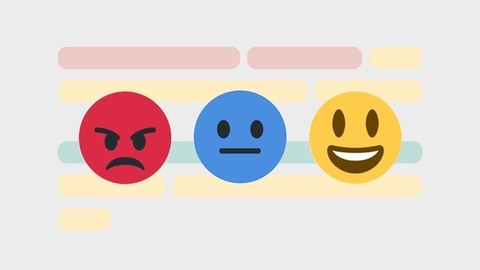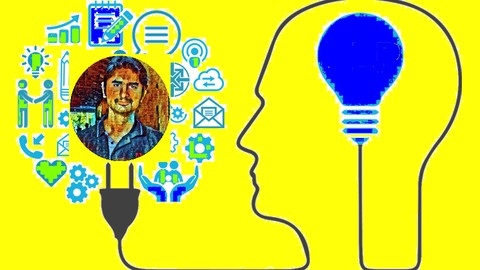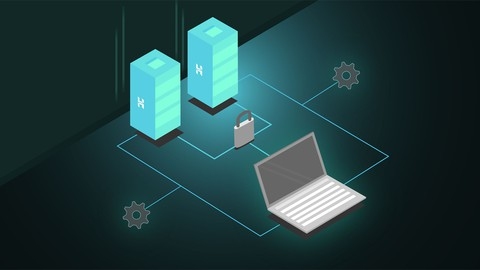If you’re searching for the best NLTK courses on Udemy, you’ve come to the right place.
Natural Language Toolkit (NLTK) is a powerful Python library for working with human language data, and mastering it can open up a world of opportunities in fields like natural language processing, text analytics, and more.
In this blog post, we’ll explore some of the top-rated NLTK courses on Udemy, helping you kickstart your journey into this exciting domain.
Natural Language Processing (NLP) in Python with 8 Projects
This course covers a wide range of topics, from the basics of NLP to advanced techniques like deep learning and text generation.
You’ll start by learning the fundamentals, such as tokenization, stemming, lemmatization, and stop word removal.
These are essential preprocessing steps for working with text data.
The course then dives into more advanced concepts like parts-of-speech tagging, named entity recognition, and sentence segmentation.
Once you have a solid understanding of the basics, you’ll apply what you’ve learned to real-world projects.
The first few projects focus on tasks like spam message classification, restaurant review prediction, and sentiment analysis of IMDB, Amazon, and Yelp reviews.
You’ll get hands-on experience with techniques like bag-of-words models, random forests, support vector machines, and naive Bayes algorithms.
The course then shifts gears to text summarization, where you’ll learn how to automatically extract summaries from documents using techniques like word frequency analysis and sentence scoring.
From there, you’ll delve into the exciting world of deep learning for NLP.
You’ll learn about word embeddings, which are dense vector representations of words that capture semantic relationships.
You’ll train your own embedding models and use pre-trained models like Word2Vec and GloVe.
Next, you’ll explore two powerful deep learning architectures for text classification: convolutional neural networks (CNNs) and recurrent neural networks (RNNs).
You’ll build models to classify spam messages using these techniques.
The course also covers text generation using TensorFlow, Keras, and LSTMs.
You’ll learn how to generate realistic-looking text, which has applications in areas like chatbots and creative writing.
In addition to NLP-specific topics, the course provides a solid foundation in data analysis with NumPy and pandas.
You’ll learn how to work with arrays, DataFrames, handle missing data, and perform operations like grouping, merging, and concatenating data.
Finally, you’ll dive into data visualization with Matplotlib, learning how to create various types of plots and customize their appearance.
Throughout the course, you’ll work on hands-on projects that reinforce the concepts you’ve learned.
Natural Language Processing with Python and NLTK
The course starts by introducing you to Natural Language Processing (NLP) and its applications, ensuring you understand the fundamentals before diving deeper.
You’ll then learn the basics of Python, including lists, strings, and functions, which are essential for working with NLTK.
Once you’ve installed NLTK, the course dives into text wrangling and cleansing techniques like sentence and word tokenization, stemming, lemmatization, and stop word removal.
These are crucial steps in preparing text data for NLP tasks.
The course covers Part of Speech (POS) tagging, a fundamental NLP task that involves labeling words with their corresponding parts of speech.
You’ll learn about sequential taggers and how to use NLTK’s POS tagger.
Named Entity Recognition (NER), another key NLP task, is also covered.
You’ll learn how to identify and extract named entities like people, organizations, and locations from text.
With the foundations in place, you’ll move on to building NLP applications.
The course covers topic modeling, which helps you discover hidden topics in large text collections.
Text summarization, a valuable skill for condensing lengthy documents, is also included.
Sentiment analysis, a widely-used NLP technique for understanding the sentiment behind text, is another topic you’ll explore.
You’ll learn how to classify text as positive, negative, or neutral.
Throughout the course, you’ll have opportunities to practice what you’ve learned, ensuring you solidify your understanding of these concepts.
The course also compares NLTK with SpaCy, another popular NLP library, and provides additional resources for further learning.
Emotion & Sentiment Analysis with/without NLTK using Python
The course starts by introducing you to Python and Pycharm, ensuring you have the right setup.
It then dives into cleaning text for Natural Language Processing (NLP), an essential step for working with unstructured data.
You’ll learn about sentiment and emotion analysis, which are crucial for understanding the underlying emotions and opinions in text data.
The course covers tokenization and stop words, fundamental concepts in NLP that help you break down text into meaningful units.
One of the highlights is the emotion algorithm, which you’ll use to classify emotions in text.
You’ll even get to visualize these emotions using Matplotlib, a popular data visualization library in Python.
Moving on, the course delves into sentiment analysis using NLTK, a powerful NLP library.
You’ll learn how to determine whether a given text or tweet has a positive or negative sentiment, a valuable skill for analyzing social media data or customer feedback.
The course also includes a dedicated section on Twitter sentiment analysis, allowing you to apply your newfound knowledge to real-world data from the popular social media platform.
Natural Language Processing (NLP) with Python and NLTK
You will start by learning the basics of NLP and NLTK, then move on to reading and cleaning data, including handling structured and unstructured text data.
The course covers the essential NLP pipeline for text data, including removing punctuation, cleaning, pre-processing, tokenization, removing stop words, stemming with the Porter Stemmer, and lemmatization using the WordNet Lemmatizer from NLTK.
You will learn about vectorizing data, a crucial step in NLP, covering techniques like count vectorization, n-grams vectorization, and TF-IDF vectorization (Term Frequency Inverse Document Frequency).
The course also delves into feature engineering, including feature creation, evaluation, and power transformations like the Box Cox Transformation.
Building machine learning classifiers is a key component, and you will explore evaluation metrics such as accuracy, precision, and recall, as well as k-fold cross-validation.
The course introduces the Random Forest algorithm and guides you through building a basic Random Forest model and applying it to a holdout test set.
Throughout the course, you will work with real-world text data, gaining hands-on experience in cleaning, pre-processing, vectorizing, and building machine learning models for NLP tasks.
Python Data Analysis Bootcamp with Pandas and NLTK
The course starts by covering Python fundamentals like variables, operators, collections (lists, tuples, dictionaries), conditionals, loops, functions, classes, and objects.
You’ll learn about parameters, return values, inheritance, and static members too.
The real highlight is the project where you’ll analyze text data using Pandas and NLTK.
You’ll convert a CSV file to a Python list, tokenize text data, find the most common lemmatized words, build dataframes per part of speech, and plot word frequencies.
This hands-on project will solidify your understanding of working with text data, a crucial skill for natural language processing.
The course takes you step-by-step, starting with Python basics before diving into the exciting NLTK project.
You’ll gain practical experience tokenizing, lemmatizing, building dataframes, and visualizing word frequencies from real data.





